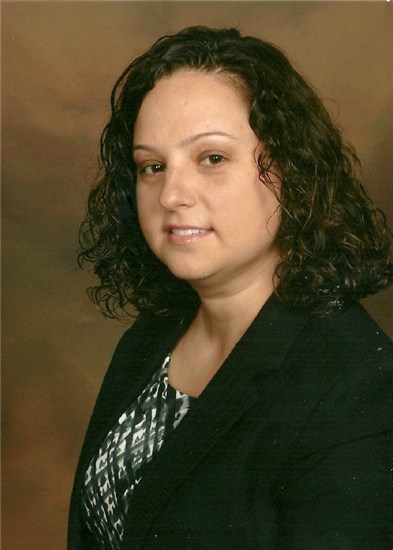By Maria Sampalis, OD

SYNOPSIS
Errant coding costs you money. Four steps can ensure that your reimbursements (and profits) don’t slip away.
ACTION PLAN
COLLECT COMPLETE THIRD-PARTY DATA. Be thorough with patients including what specifically is covered.
CODE FOR MEDICAL whenever appropriate and gainer higher reimbursement.
THINK FOLLOW-UP. ENSURE follow-up care is coded properly.
Understanding how to code will help your bottom line. Written below are some key steps to take to increase revenue and prevent insurance denials. As the owner of a two-office practice, I know first-and the importance of accurate coding in ensuring revenues are not lost. One thing that has made a huge difference in coding accuracy in my office: Overseeing it myself. I personally bill insurances. I make sure that I know how to code and bill. You can train staff, but if the doctor doesn’t know how to do it herself, how can you know what insurances are going to pay for what? Here are four of the key strategies my practice employs to capture all the dollars we earn when billing our patients’ insurance.
ROB Editor’s Note: It is important to understand that while you will bill both vision and medical insurance for many patients, you should not do so for the same exam elements in the same appointment. Doing so will leave you open to an audit of your coding practices. When deciding whether to code vision or medical insurance, think about what brought the patient to your office. For example, if the patient has diabetes that is not affecting their vision, and came to your office for a vision exam, then you would bill vision insurance and then have the patient back for follow-up visits to monitor the impact of diabetes on their eye health. However, if the patient came to you due to fluctuating vision, you would first address the diabetes-related fluctuating vision as a medical visit, billing the patient’s medical insurance. Once the patient’s vision is stable, you would then have them back into the office for a vision exam in which you refract them for eyeglasses and contact lenses and bill their vision insurance.
1. Get all the insurance information from the patient before he or she comes in for the exam.
We always double-check our patients’ insurance information at our office when they check in. This way we know what services are covered and how to properly code the exam. Make sure to ask the insurance company if a deductible applies. If not noted, the insurance deductible will go toward the exam you provide and you will have to bill the patient.
2. Embrace the medical model, have patient back for vision exam
If you are having a patient in and discover they have diabetes, you would first conduct a medical eyecare exam and then have the patient back for a separate vision exam. Be sure to bill medical insurance for the diabetes-related exam and vision insurance for the vision exam in which you conduct refraction. Usually medical eye exams are paid out at a higher rate than routine eye exams, so it is important to bill medical insurance whenever appropriate.
Take, for example, Blue Cross Blue Shield of Rhode Island–routine eye exams are reimbursed at $80. Diabetic Eye exams (ie: a medical eye exam) are reimbursed at $120. Retinal photography is billable here if you have the right equipment. That is reimbursed at $90. For a medical eye exam, total reimbursement is around $200 for a diabetic. You are providing high quality care to your patients and recording your findings with the retinal photos. It is an excellent patient education tool, as well.
3. Understand the basics on how to code
New patients or patients who haven’t been seen in three years could be coded for a complete eye exam with CPT code 92004
Established patients seen in less than three years could be coded with CPT code 92014
Don’t forget to bill separately for the refraction using CPT code 92015
Most insurance carriers have bundled the refraction with the complete eye exam code. You should know which insurance carriers pay for those services and which do not. A refraction reimbursement can range from $12-$25. That adds up over the course of the year.
Editor’s Note: According to the CPT coding rules, a refraction is NOT included in either the 92000 or the 99000 examination codes. Some insurers are violating HIPAA rules and not following the coding definitions by including the refraction in the exam code. This should be resisted by ALL doctors.
4. Code for follow-up care
If you need to follow up with a patient for medical treatment, bill for it.
Codes like 99213 (intermediate eye exam) are reimbursed between $70-95. Make sure you are filling in the case history correctly and completing all the proper procedures.
Now take, for instance, that diabetic patient. You would follow up in six months depending on the treatment. You would bill 99213 and a photo again 92250. Total follow up of $150 minimum.
Total for the year for that patient $350.
Editor’s Note: Photos are only reimbursable if you are documenting a problem or if the problem has changed. For example, if there is no difference to a problem (e.g.: a stable retinal hole), a third-party will pay for the first photo but not the second. If the hole has changed in some way on the second visit, then the second photo will also be covered.
Coding is important for your practice to generate increased revenue. Knowing the basics is only one key to the puzzle for a high-performing practice. Remember, it’s your money as a practice owner that’s at stake. For me that’s the greatest motivator to personally understand the coding and billing process and to be hands-on in making sure it gets done right.
Related ROB Articles
Rejected Claims: Understand Why It Happened and Ensure Payments
Cataract Co-Management: Do You Know How to Code for It?
Coding and Billing Key: Quality Record Keeping
Maria Sampalis, OD, is the owner of Sampalis Eye Care in Warwick, RI, and North Dartmouth, Mass. To contact her: msampalis@hotmail.com

























